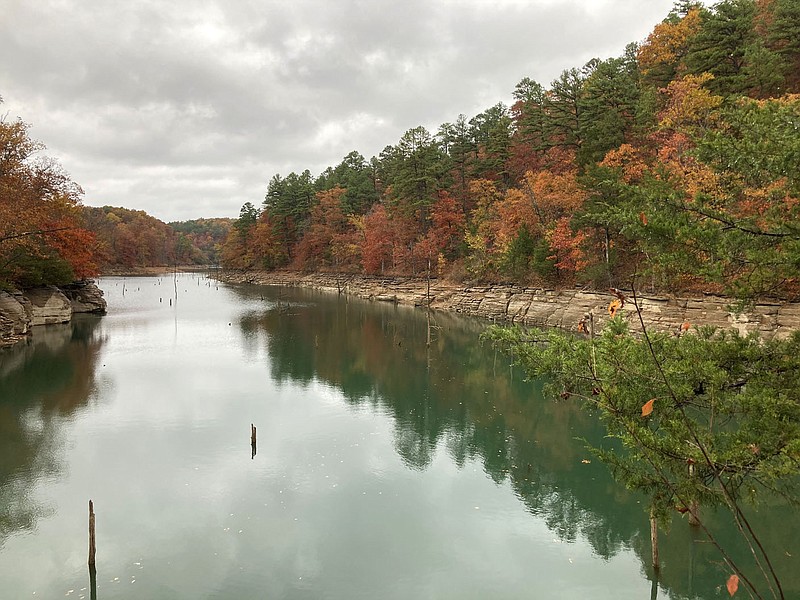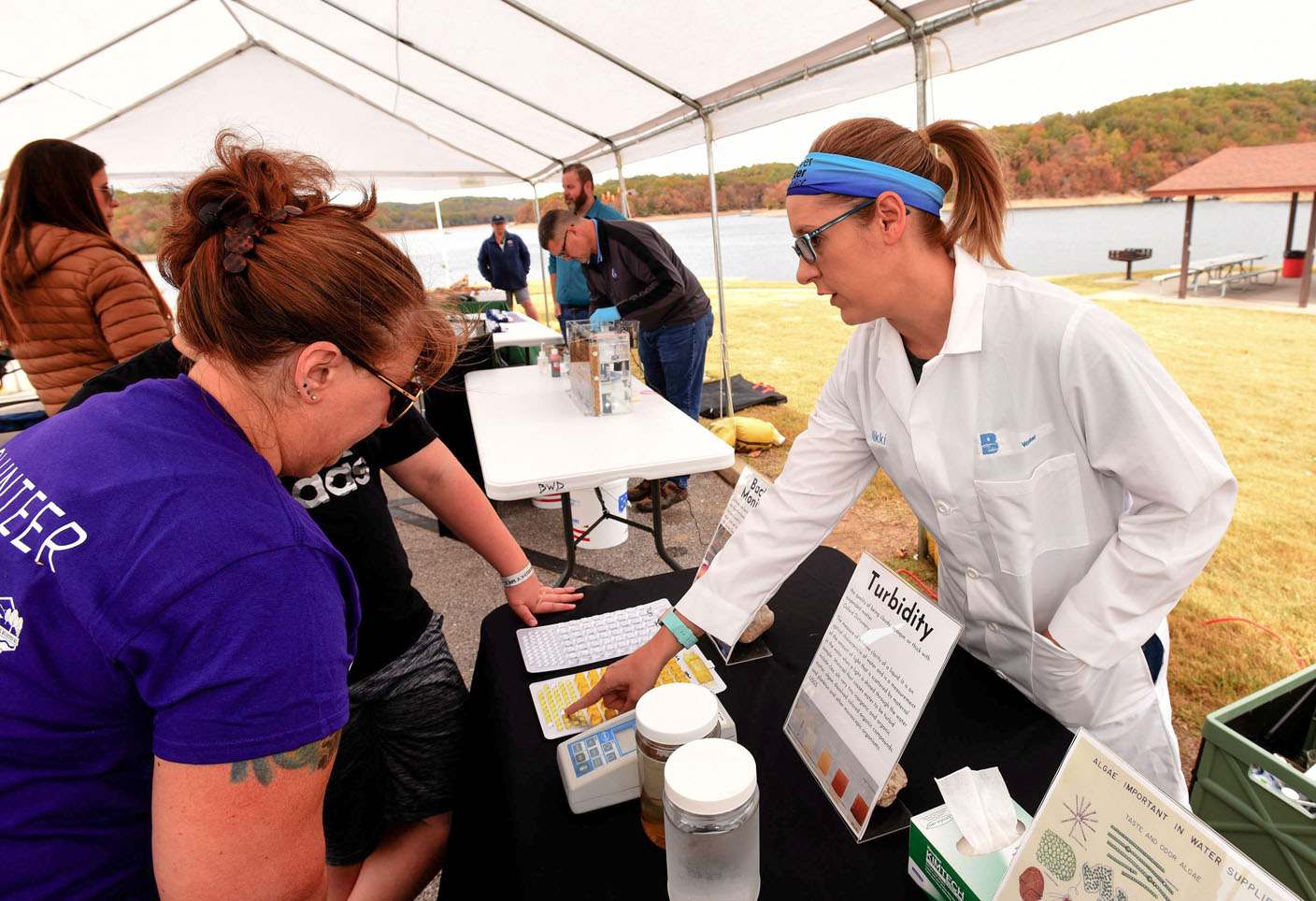Phones at the Beaver Water District ring long into autumn with customers asking one question: Why does my water taste so funky?
That's the word from Nikki Holloway, lab supervisor at the Beaver Water District in Lowell. The district treats raw water from Beaver Lake and sells the drinking water to Fayetteville, Springdale, Rogers and Bentonville, which supply water to smaller towns. Some 500,000 people in Northwest Arkansas and beyond get their drinking water from Beaver Lake, served by Beaver Water District and others that treat and sell lake water.
Starting around late summer, people call Beaver Water District concerned that their water tastes a tad musty. Those calls continue into autumn, Holloway said.
Two factors cause the taste, she said. The amount of blue-green algae increases in late summer and may cause a funky taste. That algae eventually dies, she said. Then later in the fall, lake turnover may cause a disagreeable taste. Turnover is actually more of a mixing of water layers than turnover.
Blue-green algae caused the taste in the last few weeks, Holloway said. Lake turnover may not have started yet, she said. If it has, it is in the early stages. Algae and turnover can cause tap water to taste different than other seasons of the year.
Holloway was happy to explain lake turnover and talk about any water quality issue with people who stopped by her table on Oct. 22 at Beaver Lake Volunteer Day, held at Prairie Creek park. The event also featured the annual Beaver Lake Cleanup.
She assured visitors that everything is fine with the off-tasting water. It is perfectly safe to drink as it always is. Beaver Water District staff monitors water quality weekly at the intake on the lake east of Lowell for algae, odor and taste. Monthly water samples are taken at all areas of the lake and analyzed at the district's lab.
Funny thing is, Holloway said, nearly everyone who calls is a new resident to Northwest Arkansas. They notice the off taste more than people who have lived here a long time. A 20-year resident may not notice any change in the taste at all, Holloway noted.
"New people have called a bunch this year. They don't understand what's going on. They get scared. We try to do a lot of education on that, but you can't reach everyone," Holloway said.
Lake turnover happens in the fall when two layers of water blend with each other. During summer, the lake stratifies into a deep cold layer of water with a warmer layer from the surface down to 20-25 feet. The two layers are divided by a thermocline. Swimmers or scuba divers who go underwater 20 or so feet know exactly when they hit the thermocline. The water is instantly colder. Surface water might by 90 degree, but below the thermocline it is much colder, 70 perhaps.
When the lake cools in the fall, that warm layer become denser and heavier, sort of sinks and mixes with the deep cold layer of water. Particles in the cold layer that are disturbed by the mixing can contribute to a musty taste.
"The colder the water gets, the more that taste goes away," Holloway said. That takes about a week once the mixing starts.
People who pay attention to the lake have different opinions about turnover. Some say the lake has already turned over. Others say it hasn't yet and won't for awhile. One thing's for sure, the musty taste will go away.
Flip Putthoff can be reached at [email protected]


